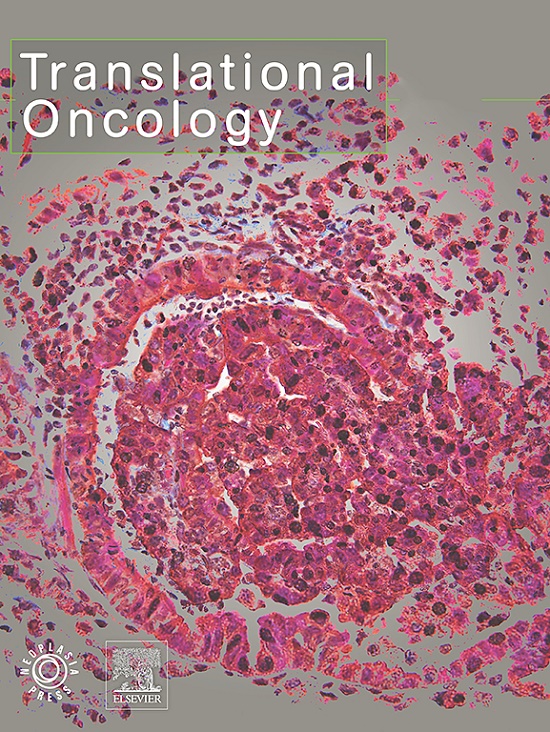化学诱导建立小鼠胃肠道基质模型新细胞系的研究
IF 5
2区 医学
Q2 Medicine
引用次数: 0
摘要
背景胃肠间质瘤(GIST)是一种起源于胃肠间质组织的肿瘤。尽管已经建立了几种体细胞或种系突变的 GIST 小鼠,但仍然缺乏真正的小鼠 GIST 细胞系用于进一步的实验研究。通过组织学和 IHC 确认了肿瘤特征。分离原代细胞,建立 mGSTc01 细胞系,并进行分子谱分析。此外,我们还在免疫功能正常的小鼠体内建立了 GIST 模型,以评估它们对伊马替尼的敏感性。结果我们的研究成功建立了化学诱导的小鼠 GIST 模型,其特征是 c-kit 和 DOG-1 染色阳性。mGSTc01单克隆细胞系表现出细长的形态,并表达c-kit标记。全外显子组测序发现了GIST细胞中Lamb1、MMP9和c-kit的突变,并提供了整个基因组拷贝数变异的详细情况。RNA 测序表明,mGSTc01 细胞中富含与细胞粘附和病灶粘附相关的基因。mGSTc01 细胞表现出明显的恶性行为,尤其是迁移、粘附和增殖能力增强。在免疫功能正常的小鼠体内,皮下异种移植不仅保留了侵袭性表型,而且对伊马替尼有反应,这突出表明该模型适用于推进治疗研究。它是在小鼠模型中研究 GIST 肿瘤微环境的有效平台,为 GIST 的新疗法发现提供了一条新途径。本文章由计算机程序翻译,如有差异,请以英文原文为准。
Characterization of a novel cell line established from mice gastrointestinal stromal model by chemical induction
Background
Gastrointestinal stromal tumors (GISTs) are a type of tumor that originates from gastrointestinal mesenchymal tissue. Although several somatic or germline mutation GIST mice were established, however, there is still a lack of an authentic mice GIST cell lines for further experimental study.
Methods
We developed a chemically induced C57BL/6 J GIST model using 3- methylcholanthrene. Tumor characteristics were confirmed through histology and IHC. Primary cells were isolated to establish the mGSTc01 cell line, and molecular profiling was conducted. Additionally, we established GIST model in immunocompetent mice to evaluate their sensitivity to imatinib.
Results
Our study successfully developed a chemically induced murine GIST model, characterized by positive staining of c-kit and DOG-1. The mGSTc01 monoclonal cell line exhibited slender morphology and expressed the c-kit marker, Whole exome sequencing uncovered mutations of Lamb1, MMP9, and c-kit in GIST cells and provided a detailed picture of the entire genome's copy number variations. RNA sequencing indicated genes associated with cell adhesion and focal adhesion were enriched in mGSTc01 cells. The mGSTc01 cells demonstrated obvious malignant behaviors, notably elevated migration, adhesion, and proliferation. In immunocompetent mice, subcutaneous xenografts not only reserved the aggressive phenotype but also displayed a response to imatinib, underscoring the model's applicability for advancing therapeutic research.
Conclusion
We firstly established a mGSTc01 cell line derived from C57BL/6 J mice GIST tumor offers, which closely mimicking human disease characteristics. It is a potent platform for investigating tumor microenvironment of GIST in mice model, and provides a novel way for new therapeutic discoveries in GIST.
求助全文
通过发布文献求助,成功后即可免费获取论文全文。
去求助
来源期刊

Translational Oncology
ONCOLOGY-
CiteScore
8.40
自引率
2.00%
发文量
314
审稿时长
54 days
期刊介绍:
Translational Oncology publishes the results of novel research investigations which bridge the laboratory and clinical settings including risk assessment, cellular and molecular characterization, prevention, detection, diagnosis and treatment of human cancers with the overall goal of improving the clinical care of oncology patients. Translational Oncology will publish laboratory studies of novel therapeutic interventions as well as clinical trials which evaluate new treatment paradigms for cancer. Peer reviewed manuscript types include Original Reports, Reviews and Editorials.
 求助内容:
求助内容: 应助结果提醒方式:
应助结果提醒方式:


